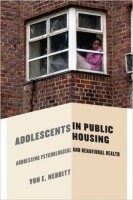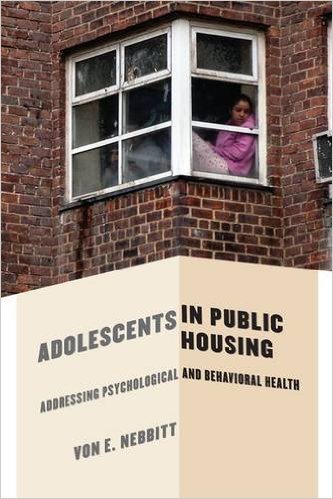 Author and Editor: Von E. Nebbitt, PhD
Author and Editor: Von E. Nebbitt, PhD
Publisher: Columbia University Press – 234 pages
Book Review by: Sonu Chandiram
Members of some 1.2 million households in the United States live in public housing developments of various types, according to Wikipedia. Typically, these are high-rise and low-rise apartment buildings. These complexes are operated by state and local agencies, and are owned and funded by the U.S. Department of Housing and Urban Development (HUD).
These subsidized apartment buildings have a colorful, complicated, and sometimes, notorious history, and this enlightening book helps you understand the historical developments by looking at the causes and consequences of government actions and laws that created these “projects,” what is their current situation, and what can be done to improve the lives of their inhabitants.
Nineteen people contributed to the contents of this book by writing or co-writing the various chapters of this book. I state “co-writing” because Von Nebbitt’s name is mentioned in the bylines below the chapter titles. He may have written or rewritten parts of the chapters, as well as edited them. In any case, we present to you below an overview of what you will find in the eye-opening book, with 11 chapters organized around three parts:
- Theoretical Underpinnings and Methodology
- Introduction: Context Matters
- A Framework for Inquiry into Neighborhood-Institutional Relationships Related to Public Housing and Adolescent Development
- An Integrated Model of Adolescent Development in Public Housing Neighborhoods
- Empirical Section
- Methodology and Procedures
- Modeling Latent Profiles of Efficacious Beliefs and Attitudes Towards Deviance
- The Social Ecology of Adolescent Alcohol and Drug Use
- The Relationship Between Neighborhood Risk and Adolescent Health-Risk Behaviors: A Focus on Adolescent Depressive Symptoms
- Risk and Protective Factors of Depressive Symptoms
- Implications and Applications
- Implications to Practice and Service Use
- A New Direction for Public Housing: The Implications for Adolescent Well-being
- Summary and Conclusion: The Challenge of Public Housing Environments for Youth
This book essentially looks at how the experience of living in public housing affects adolescent behavior, mostly in negative ways. But the authors not only look at youth that are examples of anti-social behavior, but also those who have been positively impacted despite living in public housing.
It has been commonly assumed that children of public housing residents are doomed to continue the cycle of poverty of that began with their parents. But the case is cited of a family with a surprisingly unexpected outcome: a single mother with three children: one of them got an associate’s degree, the second has a bachelor’s degree and is pursuing a master’s degree, and the third has a doctorate in pharmacological and physiological science. This family lives in a severely distressed public housing development with the highest level of crime and poverty in the city, according to Cheryl A. Lovell, executive director of the St. Louis Housing Authority, who wrote the Foreword to this book.
How was that very pleasant situation even made possible? Read this insightful book to find out!
Author:
Von E. Nebbitt, PhD is an associate professor in the Jane Addams College f Social Work at the University of Chicago. He holds a Bachelor of Arts in sociology degree from St. Louis University, and a Master of Social Work and PhD from the Boston School of Social Work. Dr. Nebitt has more than 10 years experience as an educator, researcher, and social work practitioner.
Dr. Nebbitt’s research training has been funded by the National Institute of Mental Health and Health Disparities. His research has been funded by both federal and foundation grants. His publications and community practice focus delinquency and violence, health-risk behaviors, and mental health among African-American youth living in urban public housing.
His scholarship has been published in several health and social science journals. Dr. Nebbitt’s work also assesses the protective effects of self-efficacy, parental monitoring, and social cohesion, which promote resilient functioning of residents in housing developments.







